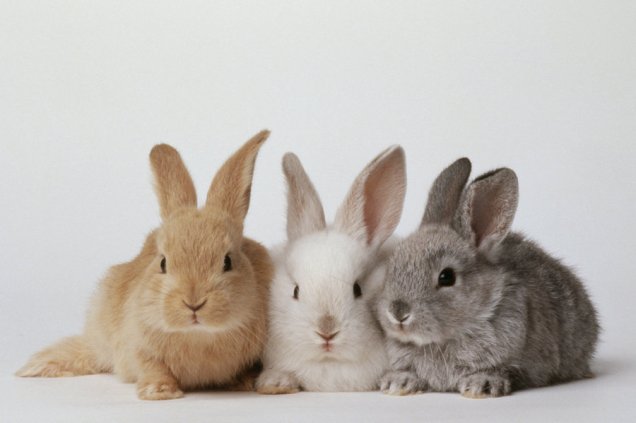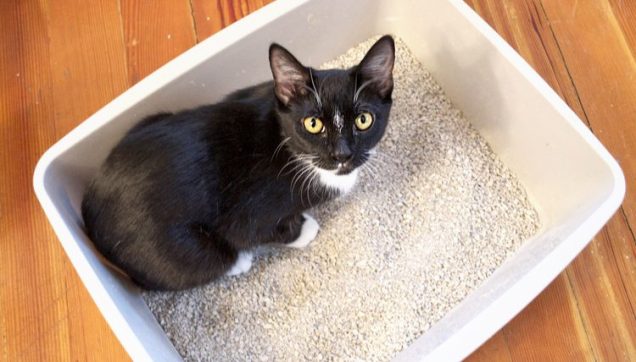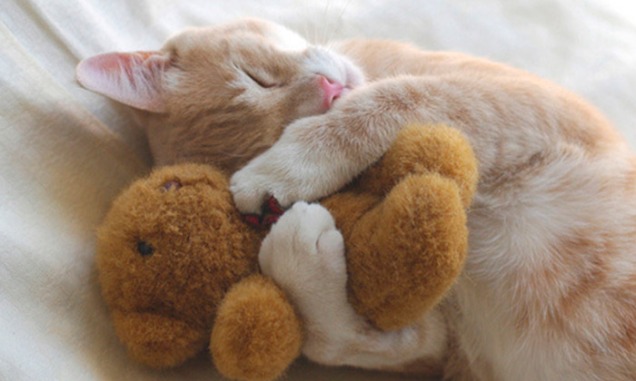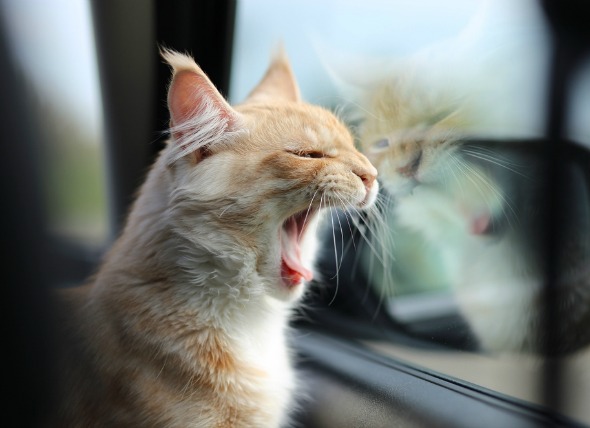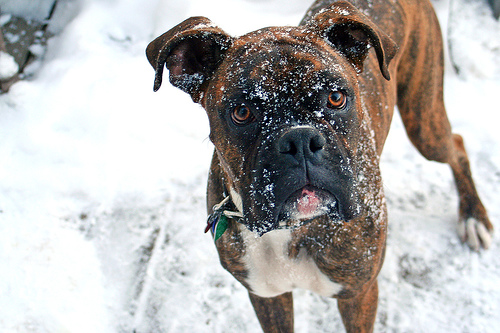Authored by: Brad Lock, DVM, DACZM
Kidney (renal) disease is a frequently diagnosed condition in captive reptiles, especially in lizards and tortoises. Kidney failure may be acute or chronic, and both types can occur at any age. Acute renal failure most often is due to an infection or toxins, including environmental toxins and medications. Chronic kidney failure is typically a result of improper husbandry and diet; causes include low humidity, long-term water deprivation or low-grade dehydration, a high-protein diet, and excessive vitamin D supplementation. Non-infectious causes are much more common than infectious ones.
The signs that a reptile might have kidney disease are often nonspecific and for that reason, the majority of reptiles are not taken to the veterinarian until the problem is advanced. Not wanting to eat, lethargy, and sunken eyes are early signs. A foul or unusual odor may be noticed at more advanced stages. A white sheen may be seen in the mouth. The eyes may look blood-shot and vessels can be easily seen in the whites. In really advanced cases, the tip of the tail, fingers or toes may begin to die and thus turn a different color. The color changes because the small blood vessels have reduced function and the blood supply is lessened so the tissues die. Commonly, reptiles with advanced kidney disease will vomit or regurgitate if force fed.
Bladder stones are commonly seen in many tortoise species and lizards with bladders. The bladder stones are associated with dehydration and kidney disease. There is no single sign that indicates a tortoise or lizard has a bladder stone. Some tortoises may lose their appetites; others may simply be less active. More serious signs are straining to defecate, or failure to do so. Pregnant females may repeatedly dig nests and strain to lay eggs without success. Some tortoises and lizards appear paralyzed or weak in their hind limbs, or they may walk with a limp on one or both sides, a sign sometimes described as a wheelbarrow gait.
Chronic dehydration is thought to be one of the most common underlying causes of developing kidney disease in captive reptiles. The water bowl may be too small for some species; swimming and soaking in the water may be beneficial for reptiles such as green water dragons and green iguanas. Sometimes water isn’t given in the appropriate manner; an anole (Anolis carolinensis) drinks droplets and may not drink from a bowl. Arboreal reptiles such as panther chameleons (Furcifer pardalis) and emerald tree boas (Corallus caninus) may become dehydrated if you rely entirely on automatic drip systems or foggers rather than taking the time to watch that they drink. People often misjudge how much water desert reptiles need, or do not recognize the impact of their local conditions on their reptiles. For example, pet bearded dragons (Pogona vitticeps) and leopard geckos (Eublepharis macularius) do well in humid Florida without “moisture retreats” or weekly soaks in shallow water baths. If that same approach is used in arid Arizona, those lizards will become dehydrated.
A poor thermal environment is often implicated in developing kidney disease. If the reptile is too cold or the room is too dry (often from air conditioning or heating), its kidney metabolism may be slower than needed to move uric acid out of the kidney and into the bladder.
Over-supplementation with powders containing vitamin D3, especially if provided to animals that are housed outdoors, may lead to high blood calcium that can cause mineralization of tissues, including the kidneys. Mineralization of the kidney can lead to reduced function and renal disease.
Malnutrition or poor diet is implicated in kidney disease. Vitamin A deficiency leads to changes in the kidney cells, which leads to decreased function and disease. A diet that has inappropriately high levels of protein, such as feeding animal protein to an herbivorous tortoise, will predispose the reptile to prolonged high levels of uric acid in the blood; that high level of uric acid may cause it to fall out into tissues, causing gout.
If the water bowl is not cleaned and disinfected frequently, a reptile may be forced to drink and bathe in feces-contaminated water. This is likely a major factor in infectious causes of kidney disease.
Affected Species
Any species of reptile can develop kidney disease, and there doesn’t seem to be any age or particular sex that is more likely to have it.
Any species of tortoise may develop bladder stones as it is thought that renal disease may lead to bladder stone formation, and bladder stones can cause ascending infections of the kidneys due to retained fluids in the bladder. However, desert tortoises (Gopherus agassizii and G. morafkai) and African spurred tortoises (Centrochelys sulcata) seem to account for the majority of cases of bladder stones; leopard tortoises (Stigmochelys pardalis) are a distant third. Bladder stones have been found in juvenile tortoises fewer than 2 inches (5 cm) in length. Bladder stones are also seen commonly in green iguanas.
Diagnosis
Your veterinarian will start by taking a thorough medical history and give a physical examination. Expect detailed husbandry questions on temperatures, humidity, diet and water features (water bowl size, how often cleaned). However, because there are few signs that directly point to kidney disease, your veterinarian will likely want to run some blood tests to look at kidney values and x-rays to look for bladder stones.
In some cases, kidney disease will cause the kidney to get bigger; they may get big enough so that your veterinarian can feel them. In lizards, the enlargement can be felt just in front of the pelvis. In snakes, it may be felt in the back third of the body. Large chelonians and lizards may have large kidneys detected with a digital cloacal exam (much like giving a dog a rectal exam). Most reptiles with enlarged kidneys are constipated because the kidneys block the pelvic canal and reduce or prevent feces and urine from passing through.
Other signs that your reptile may have kidney disease that your veterinarian might notice include weakness; lying on the table rather than sitting in an alert and erect posture; bad breath (not yours, your reptile’s!); and dehydration causing sunken eyes and thick ropy mucus in the mouth.
A bladder stone may be felt in those reptiles that have bladders (e.g., green iguana, tortoises) or as a hard object in the colon (e.g., chameleons, bearded dragons). Bladder stones, especially in tortoises, can be hard to feel, so your veterinarian may want to take X-rays or do an ultrasound. Those imaging tests may show large kidneys, bladder stones, or impaction of the colon. Mineralization of the tissues ―another sign of kidney disease―may be detected on X-rays as well.
The blood tests checking the calcium, phosphorus (especially the calcium/phosphorous ratio), and potassium levels can indicate how well the kidney is working. If the calcium and phosphorous are abnormal enough, this may be seen by your veterinarian as a white sheen in mouth tissues. The levels of potassium protein, uric acid, red blood cells and other enzymes in the blood may indicate that your reptile has kidney disease. In some cases, your veterinarian may want to do a urine test to look for abnormalities such as white blood cells, red blood cells, or parasites that would indicate kidney disease.
In some cases, your veterinarian may want to get a kidney biopsy to see how advanced the kidney disease is and be able to give you a prognosis for treatment success.
Treatment
Because there are many causes and degrees of kidney disease, your veterinarian will discuss and recommend treatments based on your reptile’s situation. In general, the initial treatments are focused on first stabilizing your reptile, and then long-term treatment will be focused on husbandry changes and possibly long-term medications as well. Initial stabilization usually involves intensive fluid therapy (fluids may be given by mouth, but more commonly will be given by injection) to rehydrate the reptile. Fluid therapy is critical as increased levels of uric acid can result in a condition known as gout. Articular gout occurs when uric acid crystals deposit in the joints and can cause lameness and swelling. Visceral gout occurs when uric acid crystals are deposited in organs such as liver, kidneys, spleen, and/or lungs, and can result in various clinical signs depending on the organs involved. Most kidney infections are treatable, so your reptile may need a course of antibiotics. If left untreated, the kidney infection can be fatal.
Mid and long-term management of reptiles in renal failure is focused on improvement and modifications to the husbandry, such as the thermal environment, adequate hydration, and a diet that provides a small amount of high-quality protein with low levels of potassium and phosphorus. To maintain hydration, your veterinarian may recommend providing a large water bowl for soaking and swimming, as well as you actively soaking the reptile rather than leaving it up to your pet.
Typically, a reptile will show improvement within 5 to 7 days of fluid therapy, although sometimes it may take 2 to 3 weeks. Reptiles that continue to appear depressed following a few days of fluids therapy carry a poor prognosis. Even with aggressive management, it is unlikely for a reptile to live longer than 6 months once diagnosed with advanced kidney failure. There is no data available on mild cases as too few reptiles have been diagnosed early enough for long-term studies.
It is important to realize that kidney failure is usually a manageable disease, but if significant damage to the kidneys has already occurred, there are no quick fixes and treatment may be required for the rest of your pet’s life. Patients with chronic renal failure can survive for variable lengths of time depending on the specific cause. After a diagnosis, your veterinarian will recommend whatever treatment is believed to be best for your pet and will give you a more specific prognosis.
Monitoring
Once a reptile has recovered from acute kidney failure and is doing well, your veterinarian may suggest routine health screenings and annual wellness visits. For those with chronic renal failure, your veterinarian may want to see your pet in more often for blood work to monitor the calcium-to-phosphate ratio and uric acid levels, and for routine x-rays.
Prevention/Prognosis
Providing your reptile with appropriate husbandry for the species is the mainstay of preventing kidney disease. Green iguanas are an example of a species that commonly develops renal failure because they are often kept in a perfect storm of pitfalls leading to dehydration and kidney disease: cage humidity under 80 percent relative humidity; a water bowl too small and/or not cleaned often enough; temperatures that are often too low; and a diet high in dried materials like pellets or biscuits, and/or includes animal protein like dog or cat food. (While green iguanas do eat some animal matter as neonates, adult green iguanas almost entirely eat leaves.)
For tortoises and green iguanas that commonly develop bladder stones, your veterinarian may recommend regular X-ray screening as part of the diagnostic work-up on any ill tortoise or iguana, as well as part of the annual preventive medicine program for these species.
As a general rule, kidney infection (pyelonephritis) has a fair prognosis if caught early and treated appropriately. Reptiles can have infections that do not lead to kidney failure; there are also other causes of kidney failure, such as dehydration. However, once the kidney has been irreparably damaged, making the reptile more comfortable is possible, but a full recovery is unlikely. Reptiles with kidney disease that have elevated phosphorus, elevated potassium, and an inverse calcium to phosphorus ratio carry a guarded prognosis, and will require significant care to be given a chance to recover. If no improvement is seen in 5 to 7 days once treatments begin, the prognosis is poor.
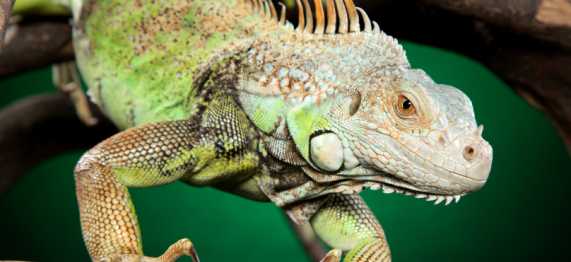
Southern Hills Animal Hospital
3827 Hite St. SW
Roanoke, VA 24014-2377
540-343-4155
Southern Hills Animal Hospital

